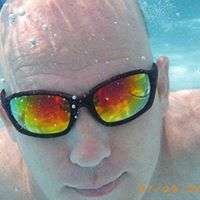Patrick Timothy Call
age ~53
from Helena, MT
- Also known as:
-
- Patrick T Call
- Patrick Timot Call
- Patrick Cull
- Phone and address:
- 512 Sussex Ct, Helena, MT 59601
Patrick Call Phones & Addresses
- 512 Sussex Ct, Helena, MT 59601
- 7105 Marseille Pl NE, Albuquerque, NM 87122
- 8713 Brandywine Rd, Albuquerque, NM 87111 • (505)7971623
- 2324 Hood Ave, Richland, WA 99352 • (509)3755362
- West Richland, WA
Industries
Environmental Services
Us Patents
-
Method And Apparatus For Air Purification
view source -
US Patent:6488900, Dec 3, 2002
-
Filed:Oct 19, 1999
-
Appl. No.:09/422206
-
Inventors:Charles J. Call - Pasco WA
Mike Powell - Kennewick WA
Seung-Ho Hong - Richland WA
Ezra Merrill - Albuquerque NM
Alireza Shekarriz - Columbia MD
Patrick Call - West Richland WA -
Assignee:MesoSystems Technology, Inc. - Kennewick WA
-
International Classification:B01D 5334
-
US Classification:422173, 422120, 422122, 422125, 422174, 422177, 422180
-
Abstract:A method and apparatus for purifying air to deactivate toxic chemical and biological species such as Sarin, mustard gas, phosgene, cyanogen chloride, Anthrax spores, bacteria, Salmonella bacteria, Hepatitis virus, and Norwalk virus. The apparatus comprises a reaction chamber coupled to a counterflow heat exchanger. Incoming contaminated air is directed through a heating side of a counterflow heat exchanger to preheat it. The air is further heated to a temperature of at least 200Â C. , which is sufficient to deactivate common biological toxic species. Optionally, the reaction chamber may include a catalyst on a surface area over which the heated air is directed, which enables a thermocatalytic reaction that is particularly effective in deactivating biological and chemical warfare agents, such as anthrax and Sarin. Portable embodiments of the invention are useful in both military and civilian air purifying applications, while fixed installation of the apparatus are useful in deactivating toxic species from the air in areas where food is prepared or stored, or in purifying air in the environment of a living space.
-
Method For Surface Deposition Of Concentrated Airborne Particles
view source -
US Patent:6695146, Feb 24, 2004
-
Filed:Sep 17, 2001
-
Appl. No.:09/955481
-
Inventors:Charles J. Call - Albuquerque NM
Patrick T. Call - West Richland WA
Vanessa M. Kenning - Kennewick WA
Andrew Kamholz - Seattle WA -
Assignee:MesoSystems Technology, Inc. - Kennewick WA
-
International Classification:B07B 700
-
US Classification:209143, 209 49, 209 58, 209 59, 7386322
-
Abstract:The present invention employs a virtual impactor to separate a flow of fluid into a major flow and a minor flow, such that the minor flow contains a higher concentration of particulates of a desired size. The minor flow is directed toward an archival surface, causing the particulates to impact against and be deposited on the archival surface. Over time, the archival surface and the virtual impactor are moved relative to one another such that particulates collected at different times are deposited as spaced-apart spots on different portions of the archival surface. The particulates are stored on the archival surface until analysis of the particulates is required. The archival surface can be coated with a material that enhances the deposition and retention of the particulates and can further be coated with materials that sustain the life of biological organism particulates deposited on the archival surface.
-
Virtual Impactor
view source -
US Patent:6698592, Mar 2, 2004
-
Filed:Jul 22, 2002
-
Appl. No.:10/202210
-
Inventors:Vanessa M. Kenning - Kennewick WA
Christopher L. Moler - Richland WA
Joseph G. Birmingham - Vancouver WA
Patrick T. Call - West Richland WA -
Assignee:MesoSystems Technology, Inc. - Kennewick WA
-
International Classification:B07B 704
-
US Classification:209143
-
Abstract:A separation plate separates a major flow of fluid from a minor flow of fluid. The major flow includes a minor portion of particles greater than a âcut size,â while the minor flow includes a major portion of particles greater than the cut size. Plates define a laterally extending passage between a front of the separation plate and its rear. The passage telescopes or converges from an initial height at its inlet, to a substantially smaller height at its outlet. A slot extends transversely into the plates from within a minor flow portion of the passage and connect into major flow outlet ports. The flow of fluid into the outlet is thus divided into the major flow, which flows from the major flow outlet ports and the minor flow that exits the outlet of the passage. To accommodate a desired flow of fluid, the width of the passage can be changed, or an array of stacked separation plates can be employed.
-
Biological Individual Sampler
view source -
US Patent:6729196, May 4, 2004
-
Filed:Feb 1, 2001
-
Appl. No.:09/775872
-
Inventors:Christopher L. Moler - Richland WA
Trent Wetherbee - Kennewick WA
Patrick Call - West Richland WA
Charles J. Call - Albuquerque NM
Vanessa M. Kenning - Kennewick WA -
Assignee:MesoSystems Technology, Inc. - Kennewick WA
-
International Classification:G01N 3120
-
US Classification:7386322
-
Abstract:A portable sampling unit capable of separating particulates, including biological organisms, from gaseous fluids such as air. A combined particle impact collector and fan is used to both move fluid through the sampling unit and to collect particulates. In one embodiment, the combined particle impact collector is a disposable unit that is removed and replaced with a fresh unit after each sampling period. The disposable unit is placed in a rinse station, where a liquid sample is extracted for later analysis. Alternatively, a disposable detection unit is incorporated in the sampling unit to provide real time detection of chemical toxins and/or biological pathogens. Preferably, the detector unit includes micro-fluidic channels so that a minimum amount of sample and test reagents are required. In another embodiment, the combined impact collector is integral to the sampling unit, rather than a separate disposable item.
-
Method For Removing Surface Deposits Of Concentrated Collected Particles
view source -
US Patent:6938777, Sep 6, 2005
-
Filed:Feb 11, 2003
-
Appl. No.:10/366595
-
Inventors:Charles J. Call - Albuquerque NM, US
Patrick T. Call - West Richland WA, US
Vanessa M. Kenning - Kennewick WA, US
Eric Hanczyc - Renton WA, US
Andrew Kamholz - Albuquerque NM, US -
Assignee:MesoSystems Technology, Inc. - Albuquerque NM
-
International Classification:B07B007/00
B07B013/00 -
US Classification:209143, 209 49, 209 58, 209 59, 7386322
-
Abstract:A method and apparatus for removing concentrated spots of collected particulates from an impact collection surface, and transferring those particulates into a container suitable for preparing a liquid sample. A jet of fluid can be utilized to remove and transfer the particulates. If a liquid jet is employed, care is taken to minimize the quantity of liquid to avoid unnecessarily diluting the sample. A mechanical scraper can alternatively be employed to remove and transfer the particulates into the container. The scraper can be rinsed with liquid or vibrated to remove the particulates. Alternatively, the portion of the surface containing a specific spot of particulates can be removed and placed into a container.
-
Optimizing Rotary Impact Collectors
view source -
US Patent:6951147, Oct 4, 2005
-
Filed:Jun 20, 2003
-
Appl. No.:10/601315
-
Inventors:Patrick T. Call - West Richland WA, US
Vanessa M. Kenning - Kennewick WA, US
Charles J. Call - Albuquerque NM, US -
Assignee:Mesosystems Technology, Inc. - Albuquerque NM
-
International Classification:G01N001/00
-
US Classification:7386322
-
Abstract:The present invention relates to optimizing the configuration of rotary impact collectors and devices in which such rotary impact collectors are employed. Rotary impact collectors are formed out of base plate upon which a plurality of vanes are mounted. One aspect of the present invention is a combined impact collector and fan in which the ratio of vane height to impeller diameter is in the range of about 0. 01 to about 0. 2. Preferably, the vanes are evenly spaced around the impeller so as to present a balanced load to the motor. Other performance enhancing elements include the use of truncated vanes, configurations optimized for injection molding fabrication, controlling the orientation of the vanes to reduce the formation of vortex forces, and enhancements configured to increase the ability to collected particles rinsed off such impellers.
-
Removing Surface Deposits Of Concentrated Collected Particles
view source -
US Patent:7759123, Jul 20, 2010
-
Filed:Mar 21, 2006
-
Appl. No.:11/385326
-
Inventors:Charles J. Call - Albuquerque NM, US
Patrick T. Call - Albuquerque NM, US
Vanessa M. Kenning - Kennewick WA, US
Eric Hanczyc - Renton WA, US
Andrew Kamholz - Albuquerque NM, US -
Assignee:MesoSystems Technology, Inc. - Albuquerque NM
-
International Classification:G01M 3/02
-
US Classification:436 53, 436104, 436106, 436110, 436174, 422 83, 422 88, 73 232
-
Abstract:A method and apparatus for removing concentrated spots of collected particulates from an impact collection surface, and transferring those particulates into a container suitable for preparing a liquid sample. A jet of fluid can be utilized to remove and transfer the particulates. If a liquid jet is employed, care is taken to minimize the quantity of liquid to avoid unnecessarily diluting the sample. A mechanical scraper can alternatively be employed to remove and transfer the particulates into the container. The scraper can be rinsed with liquid or vibrated to remove the particulates. Alternatively, the portion of the surface containing a specific spot of particulates can be removed and placed into a container.
-
Integrated Mold Detector
view source -
US Patent:20090268201, Oct 29, 2009
-
Filed:May 1, 2007
-
Appl. No.:12/299185
-
Inventors:Patrick Call - Albuquerque NM, US
-
International Classification:G01N 21/49
-
US Classification:356338
-
Abstract:A handheld device for detecting the presence of biological and chemical airborne particles. The device collects a sample by drawing air in through a filter that allows air t pass through but collects particles in the air that are larger than the pore size of the filter, which may be selected to meet the user's needs. The filter is then subjected to an optical detection assembly that utilizes UV light directed on the filter and detects visible light emitted by any collected particles via a photomultiplier tube. Prior to collecting a sample, the filter is subjected to the optical detection assembly to generate a baseline reading, which is compared with the test results of the collected sample to determine the presence or absence of particles, such as mold.
Name / Title
Company / Classification
Phones & Addresses
Organizer
AEROLERT LLC
Business Services at Non-Commercial Site
Business Services at Non-Commercial Site
8713 Brandywine Rd, Albuquerque, NM 87111
6120 Paper Flower Pl NE, Albuquerque, NM 87111
6120 Paper Flower Pl NE, Albuquerque, NM 87111
Resumes

Owner, Aerolert Llc
view sourceLocation:
Albuquerque, New Mexico Area
Industry:
Environmental Services
Youtube
Flickr
Googleplus

Patrick Call
Education:
University of Utah - MBA
About:
I have no personality.

Patrick Call
Myspace

Patrick Breeding call us ...
view sourcePatrick Breeding call us on SayNow (706-819-4464)'s official profile including the latest music, albums, songs, music videos and more updates.

Patrick Call
view source
Patrick Call
view source
Patrick Call
view source
Patrick Call
view source
David Patrick Call
view source
Patrick Pc Call
view source
Patrick Call
view source
Patrick Call
view sourceClassmates

Patrick Call
view sourceSchools:
Ellsworth High School Ellsworth KS 1982-1986
Community:
Robyn Hokr, C Stevens

Oregon City High School, ...
view sourceGraduates:
Patrick Call (1963-1967),
Marilyn Schnepel (1962-1966),
James Hutchcraft (1960-1964),
Laura Laurs (1975-1979)
Marilyn Schnepel (1962-1966),
James Hutchcraft (1960-1964),
Laura Laurs (1975-1979)
Get Report for Patrick Timothy Call from Helena, MT, age ~53













